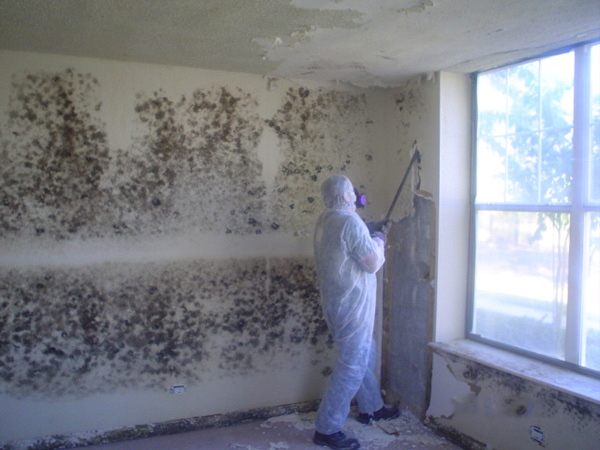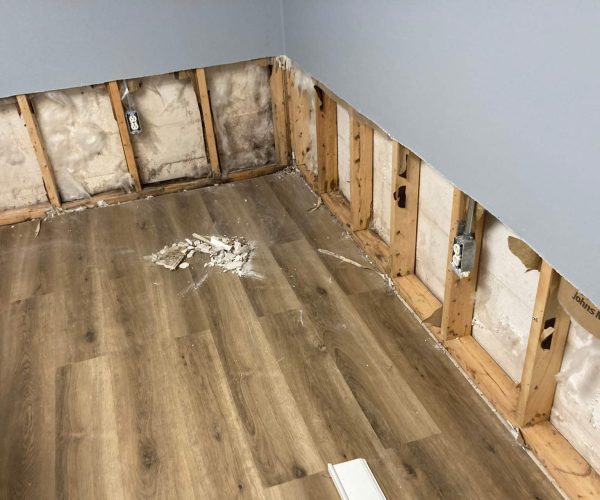Specialist Mold Remediation Philadelphia PA Specialists You Can Trust
Specialist Mold Remediation Philadelphia PA Specialists You Can Trust
Blog Article
Effective Mold Remediation Methods to Get Rid Of Mold And Mildew Contamination in Your Building
Mold contamination is a typical problem that homeowner deal with, usually bring about health and wellness issues and residential or commercial property damage if not addressed without delay and successfully. The existence of mold and mildew can be a sign of underlying moisture issues that need to be dealt with to stop its recurrence (mold removal philadelphia). There are a number of techniques available for mold and mildew remediation, each with its very own collection of restrictions and benefits. By understanding the essential approaches for removing mold and mildew, homeowner can take aggressive actions to make sure a secure and healthy living environment.
Recognizing Mold Resources

One primary method for determining mold and mildew sources is conducting a visual assessment. This includes carefully checking all locations of the residential or commercial property, consisting of concealed spaces like behind walls and under flooring. Wetness meters and thermal imaging electronic cameras can also be utilized to find hidden water leaks or dampness pockets that can be advertising mold growth.
Additionally, air tasting can assist determine mold and mildew sources by discovering raised mold and mildew spore levels in the air. By resolving the root and identifying reason of mold and mildew development, removal initiatives can be extra targeted and inevitably extra effective in removing the mold contamination.
Proper Ventilation Techniques
Effective mold remediation not just depends on recognizing mold and mildew sources but additionally highlights the significance of implementing proper ventilation strategies to prevent future mold growth (mold removal philadelphia). Proper ventilation plays a critical function in managing interior humidity levels, which in turn helps to inhibit mold and mildew spores from growing in moist settings. By guaranteeing excellent air flow throughout the building, excess moisture can be lowered, therefore developing an atmosphere less favorable to mold and mildew growth
One reliable air flow method is the usage of exhaust fans in moisture-prone areas such as bathrooms, kitchen areas, and utility room. These fans assist to get rid of humid air and stop it from collecting on surfaces. Furthermore, opening doors and home windows when weather allows can additionally aid in improving ventilation and reducing dampness degrees indoors.
It is necessary to resolve any ventilation problems without delay to maintain a healthy indoor atmosphere and protect against mold contamination. Regular upkeep of air flow systems, such as cleansing air ducts and filters, is necessary to make sure optimum air movement and prevent the buildup of wetness that might cause mold and mildew development.
Effective Cleaning and Disinfecting
To ensure comprehensive mold and mildew removal, careful cleaning and decontaminating practices should be rigorously applied. Mold spores can spread quickly if not correctly cleansed and decontaminated, bring about persisting mold growth and possible wellness dangers. When tackling mold and mildew contamination, it is vital to start by removing any noticeable mold and mildew growth using proper cleaning options and strategies. Non-porous products can often be cleaned up properly with business mold and mildew cleaners or a combination of water and cleaning agent. Permeable materials might More Help need more extensive cleansing techniques or also replacement if the mold has deeply passed through the surface.
After the physical removal of mold, sanitizing the impacted areas is necessary to kill any kind of continuing to be mold spores and prevent regrowth. Disinfectants such as bleach options or hydrogen peroxide can be made use of to sterilize the cleaned up surfaces thoroughly. It is important to follow supplier directions and security guidelines when using anti-bacterials to make sure effectiveness and decrease wellness risks. Normal cleansing and decontaminating techniques can assist preserve a mold-free atmosphere and guard the health and wellness of occupants in the property.
Encapsulation and Sealing

Encapsulation and sealing are important techniques in mold and mildew removal projects to avoid the reoccurrence of mold development. Encapsulation includes the application of a specialized sealer over surface areas impacted by mold. This sealant acts as a barrier, encapsulating the mold and mildew spores and stopping them from coming to be air-borne and infecting various other locations. By enveloping the mold, it successfully secures off the mold-infested surface areas, preventing more growth and decreasing the risk of exposure to hazardous mold fragments.
Securing, on the other hand, concentrates on addressing locations prone to moisture intrusion or where mold has actually previously developed. By securing off fractures, holes, and gaps in walls, floorings, or ceilings, the entry points for wetness and mold and mildew spores are decreased, producing an atmosphere much less for mold and mildew development. This method not only stops the spread of mold but also aids in regulating humidity levels within the home, better dissuading mold and mildew growth. When encapsulation and securing are performed properly as part of an extensive mold and mildew remediation plan, they dramatically add to ensuring a mold-free and healthy and balanced indoor atmosphere.
Monitoring and Avoidance
In keeping a mold-free atmosphere post-encapsulation and securing, comprehensive monitoring and prevention approaches play an important duty in ensuring long-lasting performance. Routine examinations are important to find any kind of signs of mold rebirth or new growth immediately. These examinations should encompass not only formerly influenced locations but also other susceptible rooms vulnerable to moisture accumulation.
Keeping an eye on moisture degrees is essential in mold and mildew prevention. Keeping indoor humidity below 60% can considerably hinder mold growth. Using dehumidifiers in moist areas, such as shower rooms and basements, can assist in keeping optimum moisture levels. Correct ventilation, including making use of exhaust fans in kitchens and washrooms, is also instrumental in reducing dampness and protecting against mold and mildew development.
In addition, informing residents on mold and mildew prevention practices, such as without delay taking care of leaks, boosting air flow, and dealing with condensation issues, is essential. Motivating sanitation and prompt removal of any kind of water-damaged materials can better prevent mold infestations. By applying a detailed monitoring and avoidance plan, homeowner can efficiently protect their rooms against mold and mildew contamination.
Conclusion
In final thought, effective mold and mildew removal techniques are crucial in removing mold contamination in homes. By recognizing mold sources, browse around these guys applying proper air flow strategies, using reliable cleansing and sanitizing techniques, sealing and enveloping affected areas, and constantly surveillance and preventing additional reading future mold and mildew development, homeowner can efficiently eliminate mold concerns. It is essential to resolve mold and mildew contamination quickly to preserve a healthy and balanced interior environment and avoid additional damages.
Efficient mold removal not just counts on recognizing mold and mildew resources but additionally emphasizes the value of applying correct air flow strategies to avoid future mold and mildew development. When tackling mold contamination, it is essential to start by removing any kind of visible mold growth using appropriate cleaning solutions and techniques.Encapsulation and sealing are vital strategies in mold removal tasks to prevent the reappearance of mold and mildew development. By sealing off splits, gaps, and voids in wall surfaces, floors, or ceilings, the entry factors for moisture and mold and mildew spores are reduced, creating a setting much less favorable to mold growth. By recognizing mold sources, implementing correct air flow strategies, using effective cleansing and sanitizing methods, enveloping and sealing influenced locations, and continuously surveillance and protecting against future mold and mildew growth, residential or commercial property proprietors can effectively eliminate mold and mildew issues.
Report this page